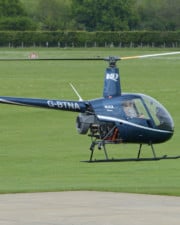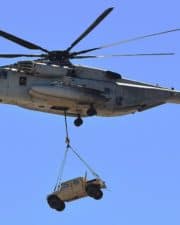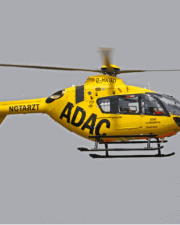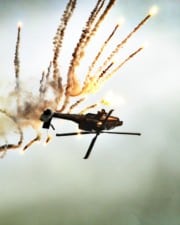Helicopters use horizontally spinning rotors to generate lift and thrust, allowing them to fly vertically and hover. The rotors require power to spin, which comes from the engine. While turboshaft engines are the most common type of engine, light helicopters may have a piston engine.
Table of Contents
The earliest helicopter designs were concepts that relied on rubber bands or spindles to generate power. A breakthrough came with the introduction of the internal combustion engine, which provided enough power to lift helicopters into the air.
The first powered helicopters had custom-built engines or rotary engines. Automobile engines and radial engines also appeared in early helicopters. However, these designs were not practical, as the engines still did not offer enough lift for sustained flight.
Helicopters also relied on separate engines for the main rotor and tail rotor, until the creation of the VS-300 by Igor Sikorsky in 1939. Sikorsky used a single four-cylinder 75 hp engine to power both rotor systems.
The use of four-cylinder piston engines became standard in helicopters until the release of the turboshaft engine in the late 1950s. The new engines were lighter, more reliable, and capable of providing sustainable high-power output.
In the following decades, helicopter engines were refined and improved to maximize performance. Large helicopters now use two or three turboshaft engines, medium helicopters may use a single turboshaft engine, and light utility helicopters tend to still run on piston engines.
So let’s take a look at all types of engines used in helicopters through the years.
1. Reciprocating Engines
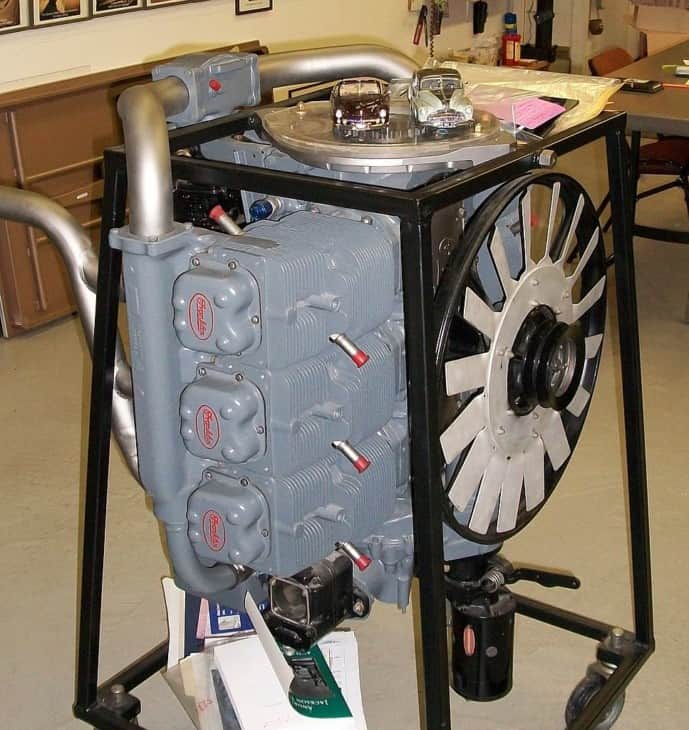
A reciprocating (piston) engine contains a series of pistons that move up and down to rotate a crankshaft. The most common configuration for a reciprocating engine is the four-stroke engine, which includes four cycles for producing power. The four cycles include intake, compression, combustion, and exhaust.
Piston engines are mostly used in small helicopters, as the weight of the engine makes it less efficient for heavier helicopters. Piston engines are typically categorized based on the arrangement of the cylinders, such as in-line, radial, opposed, and rotary. The engine may also be air-cooled or liquid cooled.
Most people consider the Sikorsky VS-300 to be the world’s first helicopter. It used a reciprocating engine with an opposing cylinder configuration. However, the Focke-Wulf Fw 51 was first flown three years earlier and featured a radial engine.
2. Turbine Engines
In 1951, Kaman Aircraft released the first turboshaft-powered helicopter. A turboshaft engine is a type of gas turbine engine designed to produce shaft power. Compressed air mixes with fuel in the combustion chamber. The fuel/air mixture then ignites and expands, powering the turbine wheels and rotating the rotor system.
Turbine engines revolutionized the aircraft industry in the 1940s and 1950s. Compared to piston engines, turbine engines could produce more power, which was the biggest limitation of early piston-engine helicopters. Today, most helicopters use turboshaft engines, except for light utility helicopters.
Turboshaft engines use many of the same principles found in piston engines. The engine has an air intake, a compressor, and a combustion chamber. However, instead of pistons, the power is sent to a turbine. The turbine powers the transmission, which transfers rotation from the shaft to the rotor systems.
3. In-Line Engines

The earliest piston engines used in helicopters and other aircraft featured in-line configurations. The cylinders were placed in a row (in-line).
The in-line design made the engines narrower but limited airflow for cooling the engine, often requiring liquid cooling. Adding liquid cooling made in-line engines heavier, limiting their efficiency.
In-line piston engines were commonly used in automobiles and come in various configurations, including V-shaped, H-shaped, and W-shaped. During the early days of aviation, engineers began placing in-line automobile engines in helicopters.
4. Rotary Engines
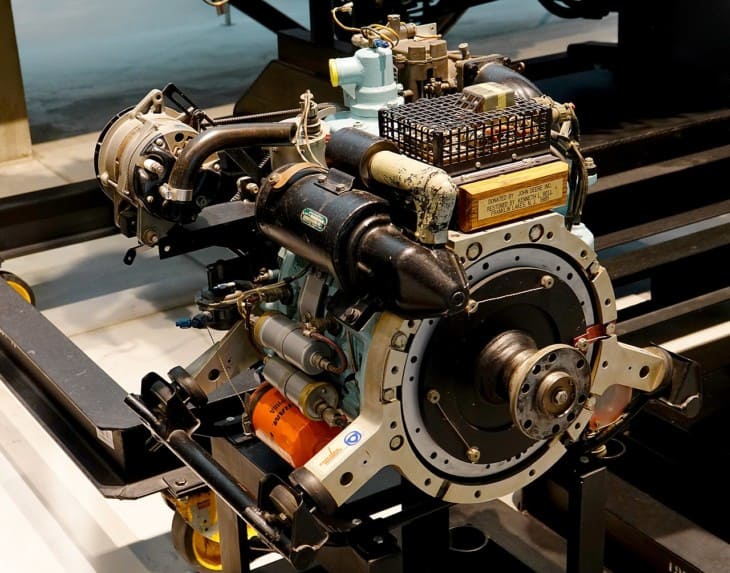
Rotary piston engines were introduced during World War I. Instead of placing the cylinders in a row like an in-line engine, the cylinders extended around a central crankshaft. Rotary engines ran smoother and provided improved cooling compared to earlier engines.
Both rotary engines and radial engines have a radial design. However, rotary engines have a stationary crankshaft and a rotating cylinder block while radial engines have rotating crankshaft and stationary cylinder blocks.
Rotary engines were originally designed for airplanes but appeared in some of the first helicopter prototypes. The engines were placed vertically to rotate the rotor system.
5. Opposed-Piston Engines

Horizontally opposed engines have two rows of cylinders on opposite sides of a crankshaft. The cylinders are often placed in a horizontal position. This provides better air cooling and a lower center of mass.
Horizontally opposed engines are also called flat engines, boxer engines or block engines, as the design creates a lower profile compared to other engines.
The Sikorsky VS-300 used a horizontally opposed engine, as did many of the early helicopters throughout the 1940s.
6. Radial Engines

Radial piston engines have one or more rows of cylinders extending from a central crankshaft. Compared to early in-line engines and rotary engines, the radial engine was smaller and more efficient, with greater power to weight ratio. However, they mostly appeared in cargo planes and attack fighters.
Due to the efficiency of radial engines, they were found in a wide range of aircraft until they were mostly replaced by turbine engines. The Bristol 171 Sycamore and the Sikorsky S-55 are a couple of the rare examples of radial engine helicopters.
The Bristol 171 was manufactured in Great Britain in 1947. It featured a nine-cylinder radial engine that was commonly used on fixed-wing airplanes. The S-55 was a transport helicopter used by the US military in the 1950s.
7. Electric Engines
Electric engines are not commonly used for helicopters. They tend to only appear in toy helicopters and small unmanned aircraft, as electric motors typically lack the power needed to generate enough vertical thrust for a manned helicopter.
While electric engines are mostly used in unmanned aircraft, manufacturers and engineers have developed several all-electric helicopters over the years. In 2010, Sikorsky revealed a prototype for an electric single-rotor helicopter powered by two lithium-ion battery packs.
One of the early innovators of the helicopter industry also used electric motors. Arthur M. Young, who is credited with inventing the stabilizer bar, used a converted electric motor to drive the rotor head on his model helicopters in 1928.
Related Posts



